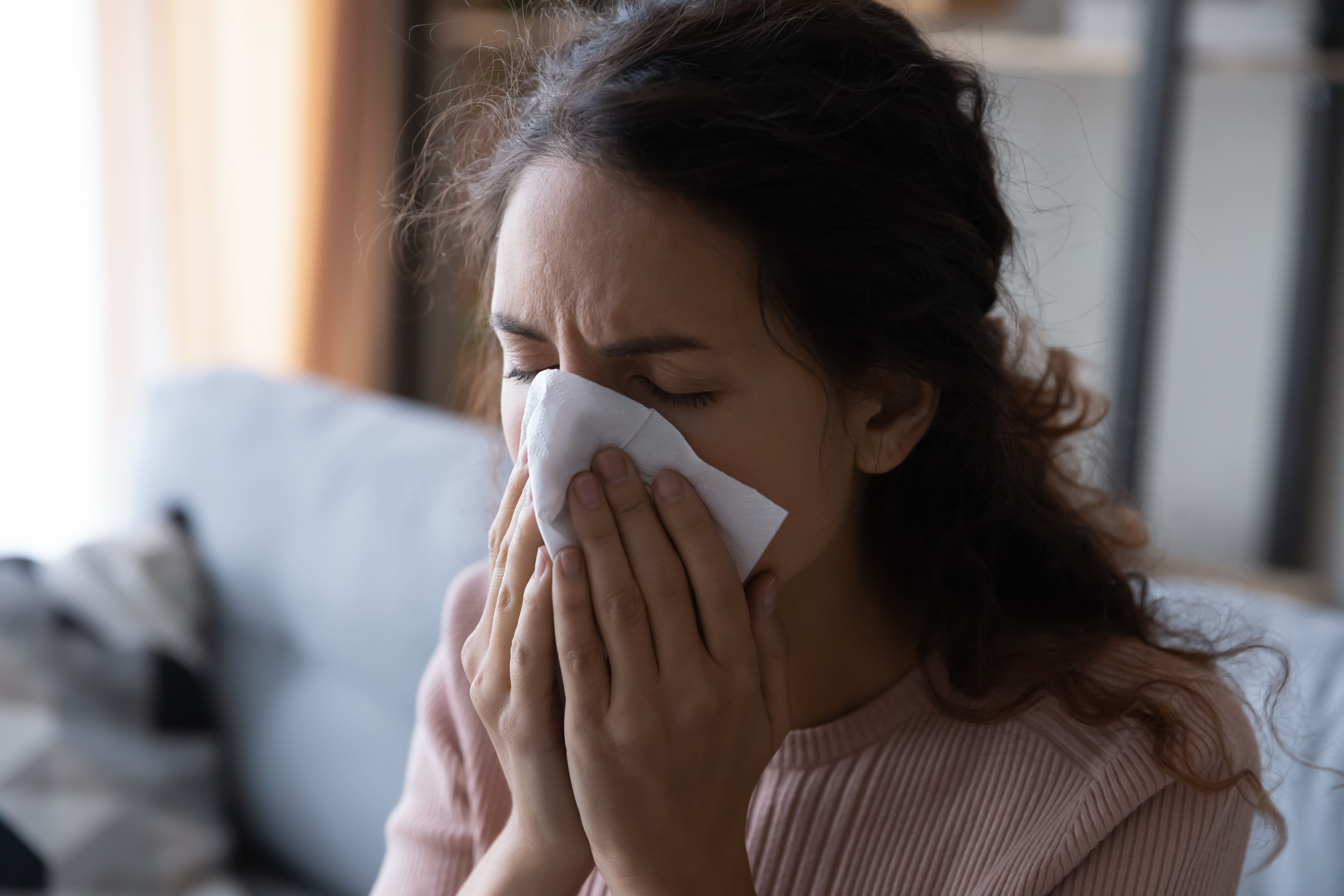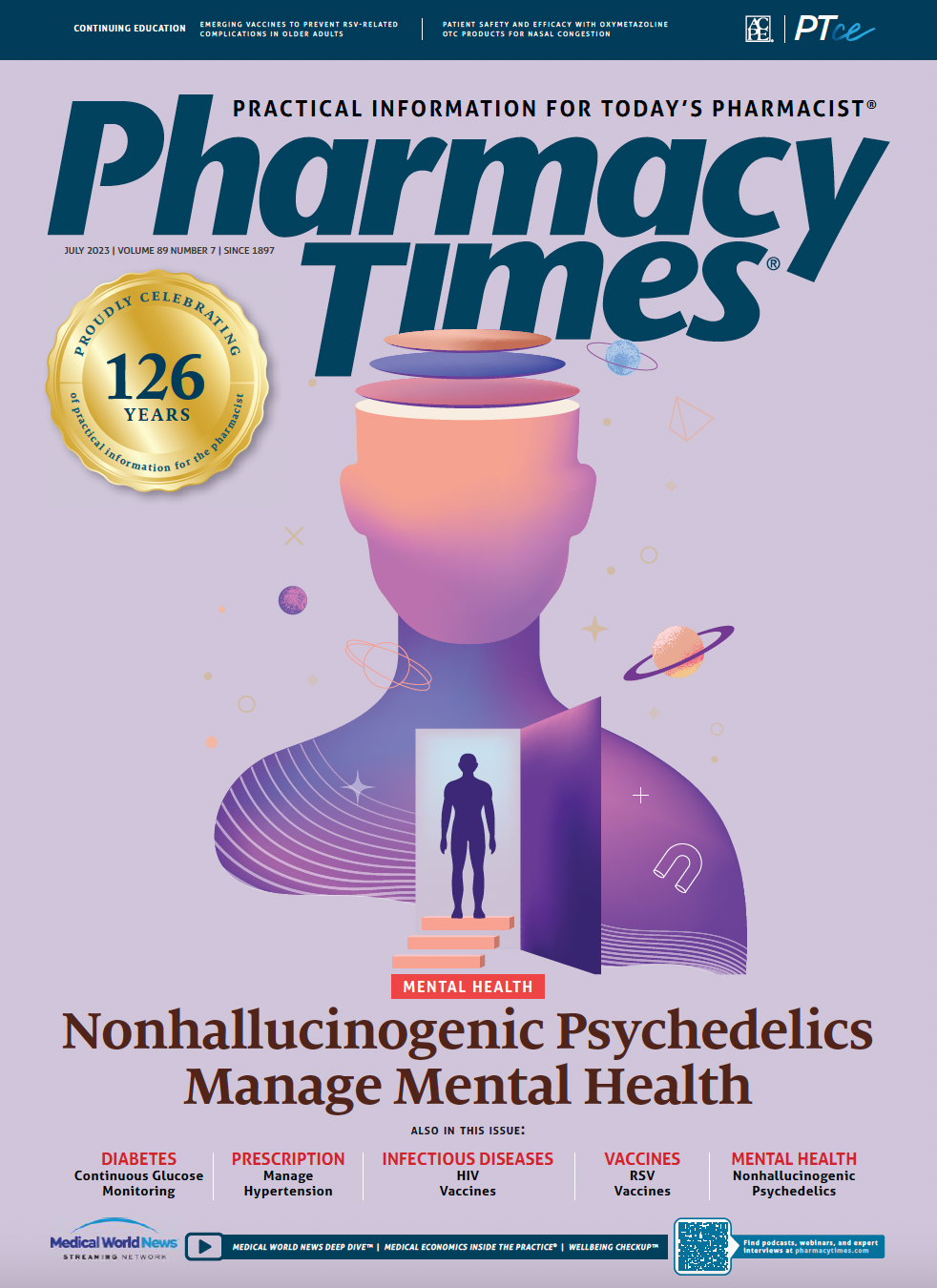Publication
Article
Pharmacy Times
Postnasal Drip
Experts answer questions to help provide relief for those suffering with postnasal drip.
CASE 1: Systemic Antihistamines
Question
MR is a woman aged 48 years who is looking for something to manage her seasonal allergies. She states that she normally works indoors, which helps control her allergies. However, this summer she is working outdoors. She is complaining of watery eyes and postnasal drip. She prefers not to use a spray or anything that makes her drowsy. What recommendations do you have for MR?
Woman blowing her nose | Image credit: Fizkes - stock.adobe.com

Answer
There are multiple second-generation OTC products for seasonal allergies, such as loratadine (Claritin; Bayer), cetirizine (Zyrtec; Johnson & Johnson), fexofenadine (Allegra; Sanofi), and levocetirizine (Xyzal; Sanofi). Second-generation products tend to be highly selective for H1 receptors and cause limited sedation, unlike first-generation antihistamines such as diphenhydramine (Benadryl; Johnson & Johnson). Although intranasal corticosteroids are more effective, MR prefers an oral medication. Because her symptoms are mild to moderate, she can try a second-generation agent. The advantages of second-generation agents include low cost, quick onset, and efficacy in controlling mild to moderate symptoms.1 MR can start with loratadine 10 mg/d. She should be told not to take more than 1 tablet/d. Common adverse effects include headache, somnolence, fatigue, and dry mouth. Patients with kidney disease with an estimated glomerular filtration rate of less than 30 mL/min should take loratadine every other day. Patients who are pregnant, are breastfeeding, or have liver disease should consult a health care professional before use.2
CASE 2: Intranasal Decongestants
Question
JL is a man aged 39 years with a history of hypertension. He explains that he has had nasal congestion and postnasal drip for 2 days. He has tried home remedies such as eucalyptus essential oil diffused through a humidifier. However, none of his nonpharmacological approaches have provided relief. He is frustrated by the number of decongestant pills he takes every day and wants to know if there is an alternative. What would you suggest to JL?
Answer
Decongestants are available as oral and intranasal formulations and provide short-term relief from nasal congestion. They work by stimulating α-adrenergic receptors in the nasal mucosa, leading to vasoconstriction and improved nasal ventilation. Oral decongestants such as pseudoephedrine (Sudafed; Johnson & Johnson) and phenylephrine HCI (Sudafed PE; Johnson & Johnson) carry a greater risk for adverse effects, including tachycardia, elevated blood pressure, and insomnia.3 Because JL reports a history of hypertension and is asking for alternatives to oral options, an intranasal product would be appropriate. A commonly used intranasal decongestant is oxymetazoline (Afrin; Bayer). JL should instill 2 to 3 sprays into each nostril twice daily.4 The adverse effects profile is limited to local reactions, including nasal irritation, burning, and dryness. Nasal decongestants carry the risk of rhinitis medicamentosa, or rebound congestion, if used for prolonged periods. This occurs via downregulation of the α-adrenergic receptors. Patients should be counseled to limit use of these products to no more than 3 to 5 days.3
CASE 3: Nasal Corticosteroids
Question
QP is a pregnant woman aged 26 years who is complaining of postnasal drip, runny and itchy nose, and constant sneezing. She states that she experiences seasonal spring allergies every year. Since becoming pregnant, she has been taking daily walks and spending more time outdoors. QP explains that she has used triamcinolone acetonide (Nasacort Allergy 24HR; Sanofi ) in the past but is unsure whether it is safe to use during her pregnancy. What suggestions do you have for QP?
Answer
Triamcinolone acetonide is an intranasal corticosteroid (INCS) that is commonly used to manage allergic rhinitis symptoms. QP should talk to her health care provider before use. Studies have shown that, compared with other INCSs, triamcinolone-containing products have a significant association with congenital respiratory defects.5 QP should consider the use of other INCSs that have a lower systemic bioavailability and have more data supporting safety in pregnancy. Products containing budesonide (Rhinocort Allergy; Johnson & Johnson), fluticasone propionate (Flonase Allergy Relief; Haleon), fluticasone furoate (Flonase Sensimist; Haleon), or mometasone (Nasonex 24HR Allergy; Organon) would be safer alternatives.5
CASE 4: Neti Pot
Question
TW is a man aged 33 years interested in nonpharmacological therapies to help with his cold symptoms. He has been experiencing postnasal drip and is complaining of a dry, irritated, stuff y nose. He heard from a friend that there is a type of “teapot” that he can use, but he is not sure where he can fi nd one or how to use it. How would you counsel TW?
Answer
TW is referring to a nasal irrigation device known as a neti pot. Proper use allows for clearance of mucus and moistens the nasal passages. It can be purchased OTC at a pharmacy. Only distilled or sterile water should be used with the device. Tap water can be used if it is boiled for 5 minutes and then cooled until lukewarm. Tap water that has not been boiled should never be used because it can harbor bacteria and lead to nasal infections. These mediums can be used to prepare saline solutions, or a premade solution can be purchased. TW should be instructed to insert the spout of the saline-filled pot into his upper nostril while leaning over a sink with his head tilted sideways. The liquid should be poured into the upper nostril, and it then will drain through the lower nostril. TW should repeat the process on the opposite side.6 Once he is done rinsing his sinuses, he should be counseled to wash the neti pot with distilled or sterilized water and completely dry the device before storage. Neti pots provide a gentle irrigation of the sinuses and can be used every 2 hours as needed.7
References
- Seidman MD, Gurgel RK, Lin SY, et al; Guideline Otolaryngology Development Group; AAO-HNSF. Clinical practice guideline: allergic rhinitis. Otolaryngol Head Neck Surg. 2015;152(suppl 1):S1-S43. doi:10.1177/0194599814561600
- Claritin. Prescribing information. Bayer; 2000. Accessed February 22, 2023. https://www.accessdata.fda.gov/drugsatfda_docs/label/2000/20641s7lbl.pdf
- May JR, Dolen WK. Management of allergic rhinitis: a review for the community pharmacist. Clin Ther. 2017;39(12):2410-2419. doi:10.1016/j.clinthera.2017.10.006
- Afrin. Prescribing Information. Bayer; 2023. Accessed February 22, 2023. https://dailymed.nlm.nih.gov/dailymed/drugInfo.cfm?setid=89c165ba-3ad5-49b5-a5bb-423dc8e15bad
- Alhussien AH, Alhedaithy RA, Alsaleh SA. Safety of intranasal corticosteroid sprays during pregnancy: an updated review. Eur Arch Otorhinolaryngol. 2018;275(2):325-333. doi:10.1007/s00405-017-4785-3
- Is rinsing your sinuses with neti pots safe? FDA. Updated August 4, 2021. Accessed February 22, 2023. https://www.fda.gov/consumers/consumer-updates/rinsing-your-sinuses-neti-pots-safe#:~:text=Little%20teapots%20with%20long%20spouts,congested%20sinuses%2C%20colds%20and%20allergies
- CVS - allergy relief neti pot. Prescribing information. CVS; 2020. Accessed February 22, 2023. https://dailymed.nlm.nih.gov/dailymed/fda/fdaDrugXsl.cfm?setid=a782735a-862b-7173-e053-2995a90ad85d&type=display






